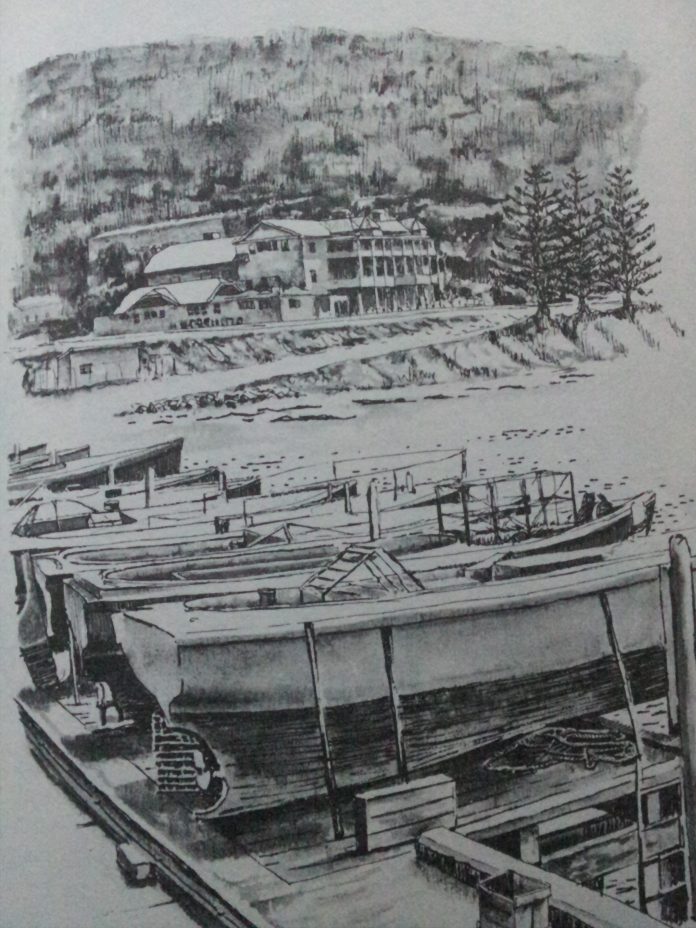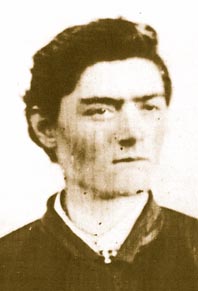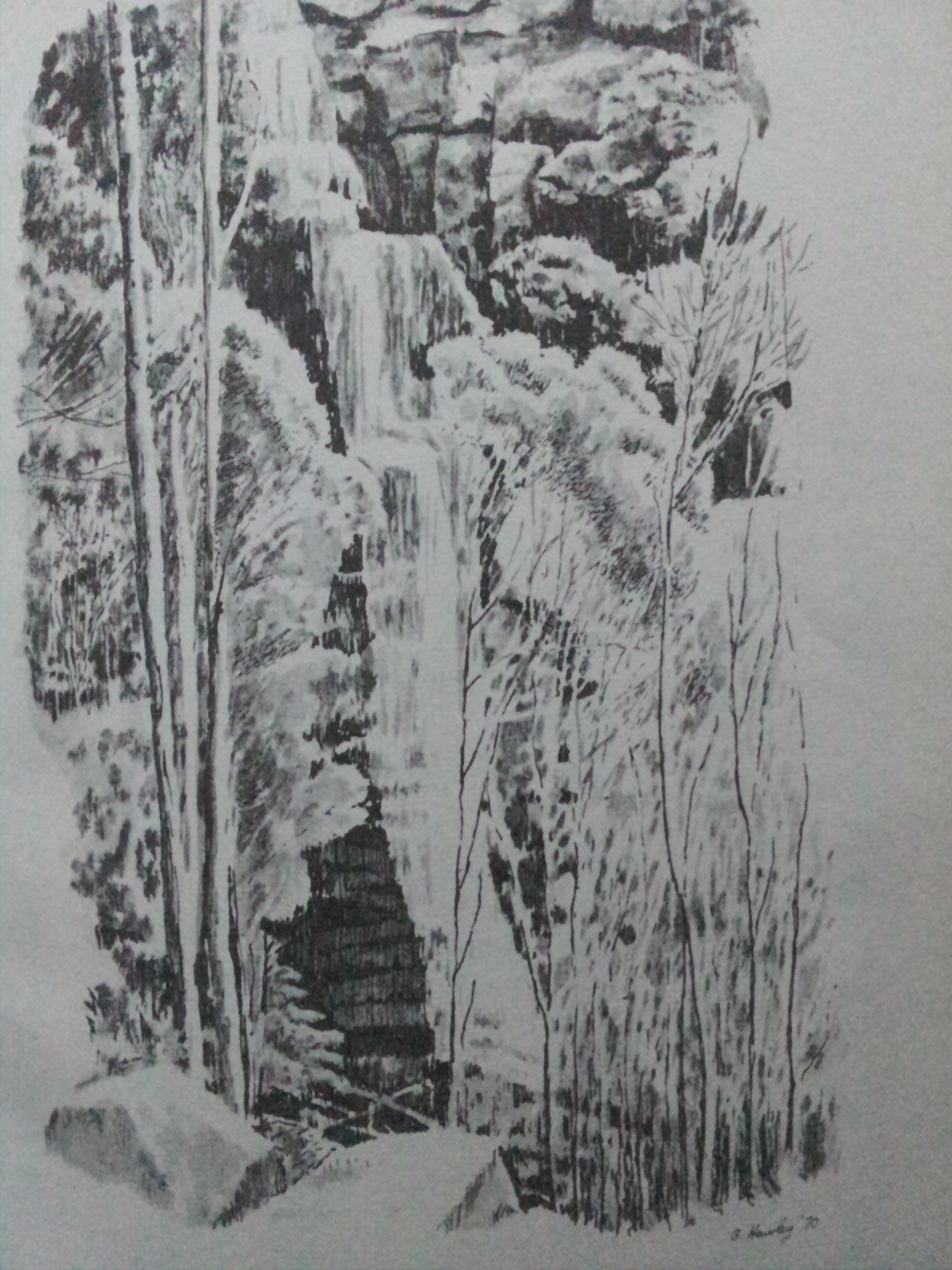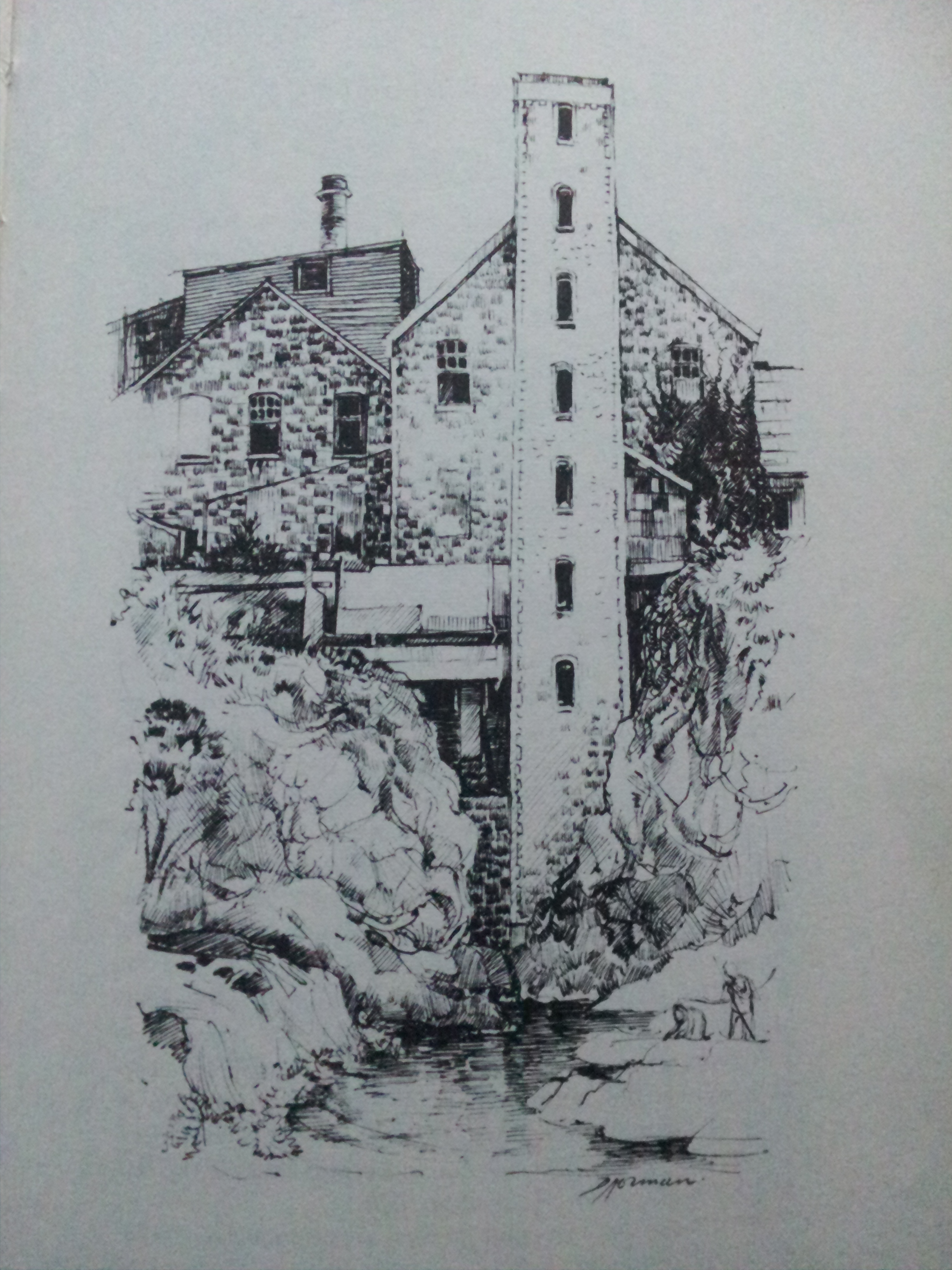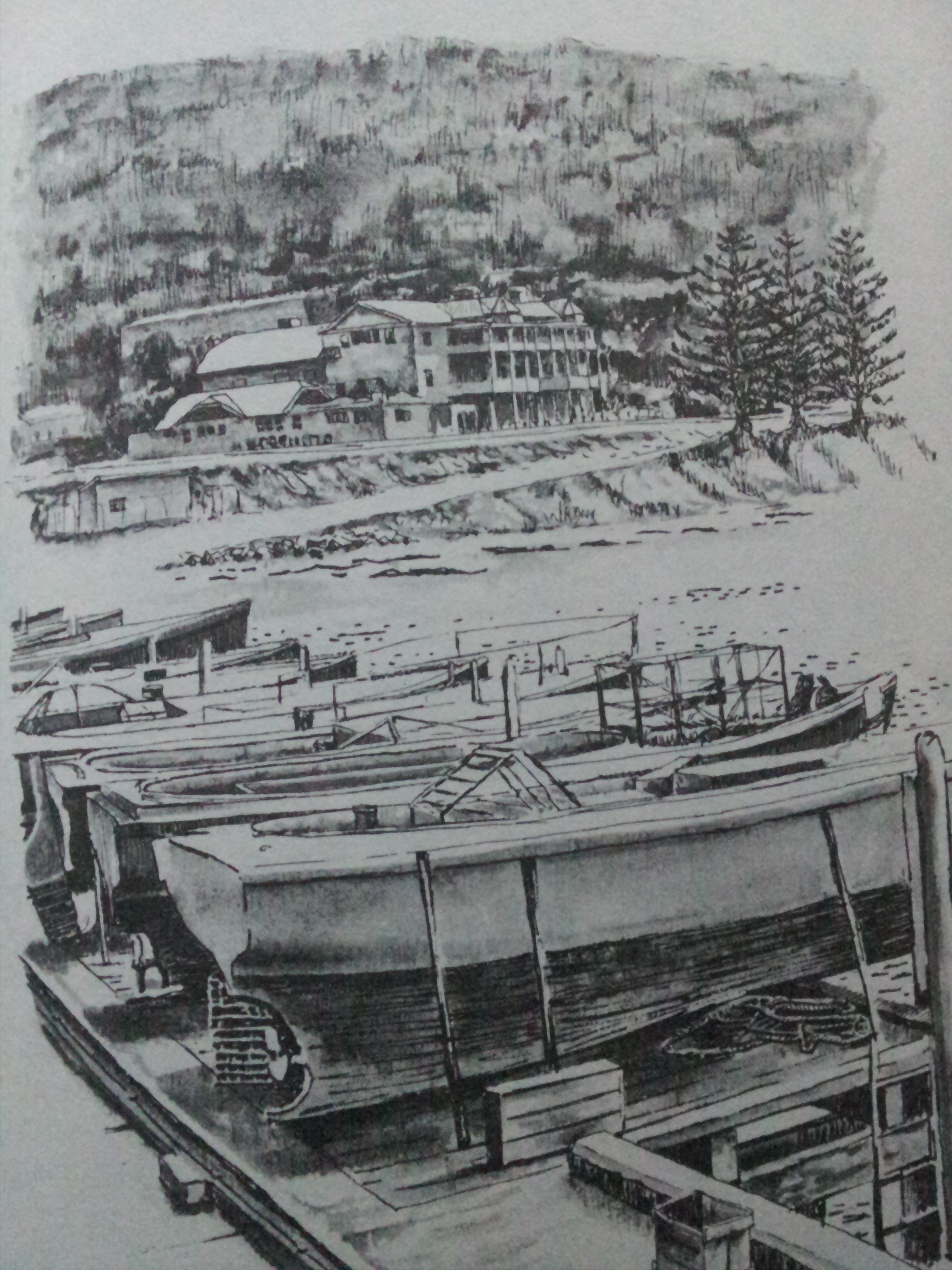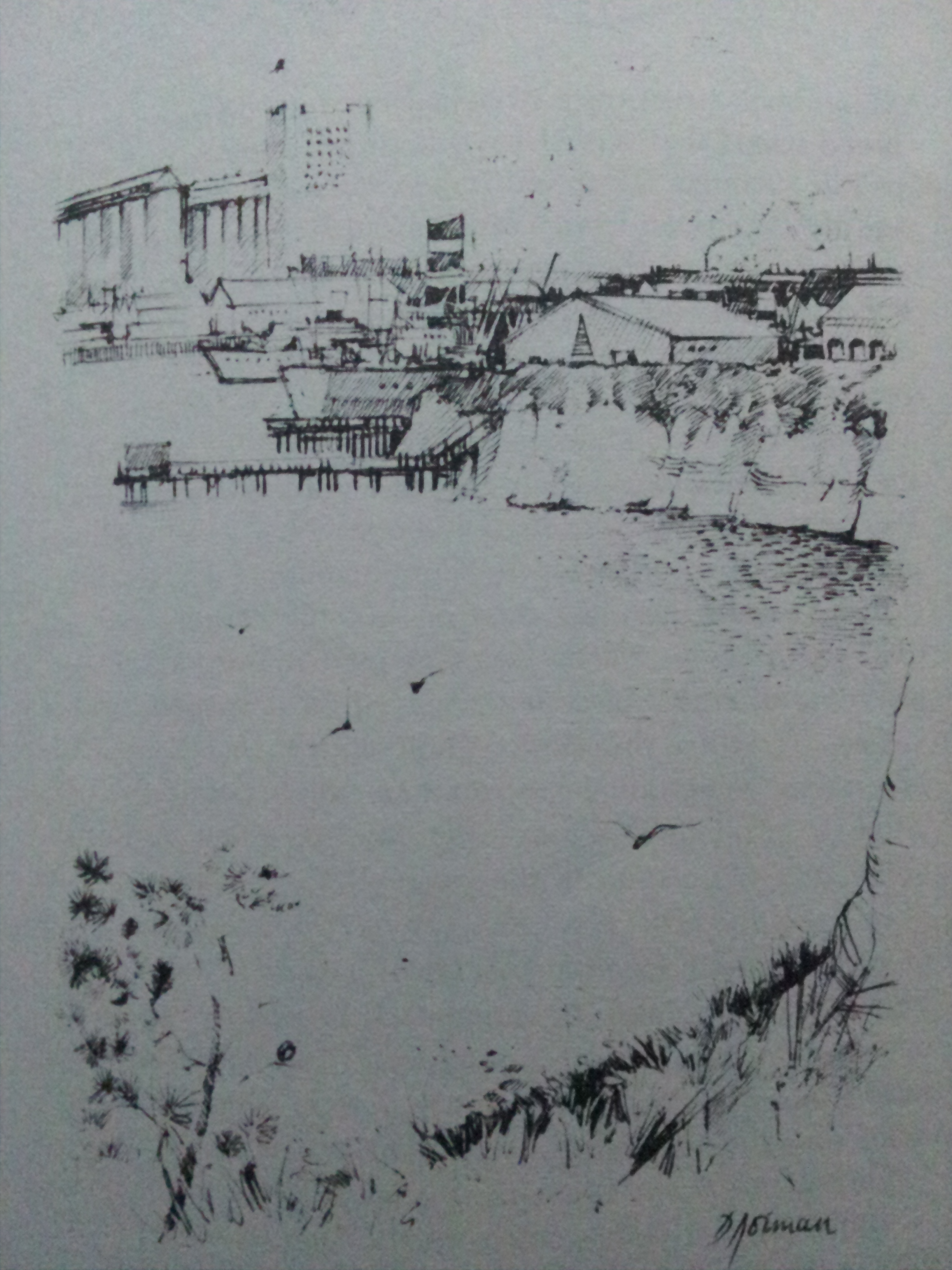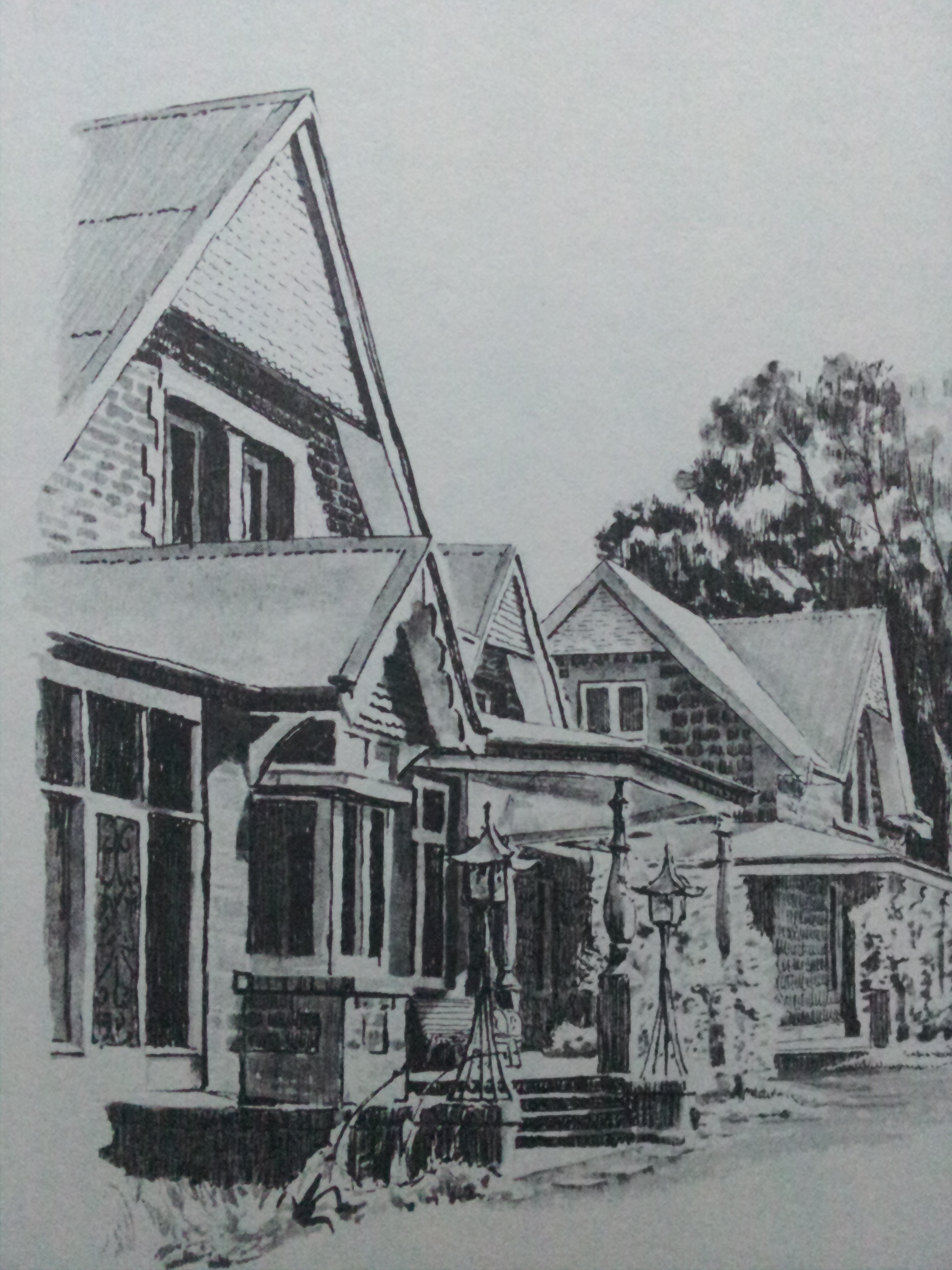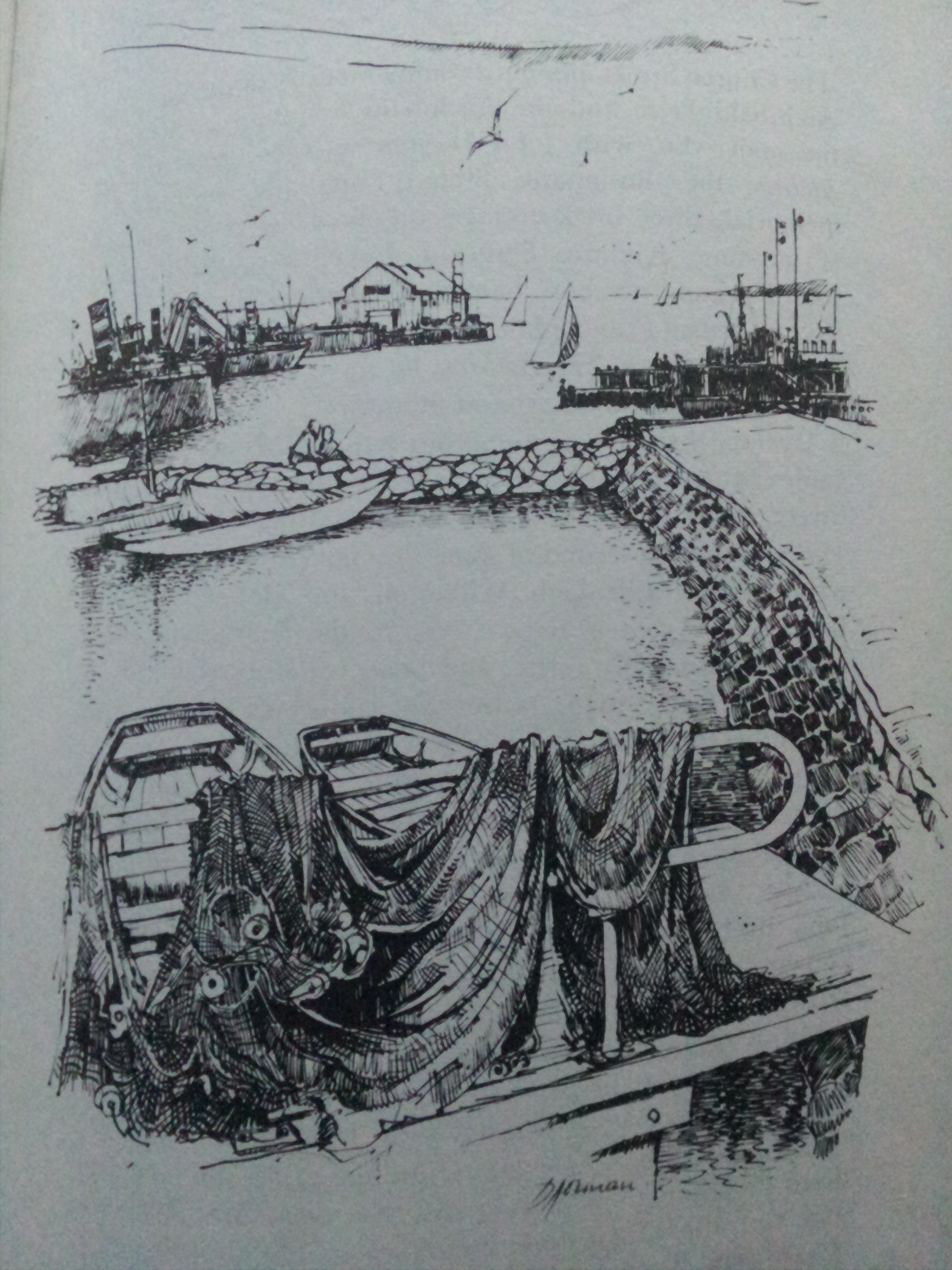Mystery, myth and magic inhabit Geelong and its great southwest hinterland. Volcanoes, megafauna, UFO sightings, war secrets … NOEL MURPHY sketches an artistic panorama.
TIME capsules in black and white, a moment in history, Magic Boomerang-like standstill snapshots of an era not quite gone … however they’re described, the Rigby Sketchbook series from the late 1960s and early ’70s are diminutive treasures.
Cities, towns and regions across Australia were featured in the slender dust-cover hardback books, using short potted histories and smart monochrome hand sketches. Everywhere from the Dandenong Ranges to Fremantle, Sydney, the Gold Coast and the Yorke Peninsula.
These days they’re hard to find in second-hand bookshops; most snapped long ago by collectors with a weather eye for beauty and a bargain. Of the 60-odd little tomes, two feature Geelong, Surf Coast and regional sites and buildings: Geelong Sketchbook and Western District Sketchbook.
They’re terrific introductions to a region steeped in history, legends, myths and folklore few residents know.
“Squatter town and market town, industrial complex and regional city, Greater Geelong shelters between the pleasant slopes of the Barrabool Hills and the long curve of Corio Bay,” the Geelong edition starts out, as catalogued by the late Les Blake, who also authored another local gem, Tales from Old Geelong.
Blake pens historic vignettes of Point Henry, the Wool Exchange, St Mary’s Basilica, the old Telegraph Office, wool mills along the Barwon River, Point Henry, Corio Villa, Christ Church and many other sites.
Accompanying illustrations by Desmond Norman depict the flame in the sky synonymous with Shell’s Corio refinery, the Belcher fountain at the former Malop/Gheringhap/Mercer streets roundabout, the bluestone and brickwork masonry of the ageing Barwon Paper Mill at Queen’s Park and numerous other structures and scenes.
Industrial players, civic scene, the city’s waterside roots, natural attributes – all feature neatly and matter-of-factly into these collections. Like art so often does, they capture a special time that probably didn’t seem so special back then.
For Geelong, this means places such as the wheat terminal, clocks, towers, streetscapes, Latrobe Terrace sans traffic lights, the northern quays, old Stony Pier, the Archibald memorial, Johnstone Park’s art gallery and elegant rotunda, the Gordon and Eastern Beach, all of which get a guernsey, rendered in draftsman’s pen and ink.
But it’s all just a starting point.
Casting farther afield, the Western District Sketchbook takes in familiar southwest sites and sights, among them Lorne’s Pacific Hotel, Coragulac House outside Colac, Winchelsea’s Barwon Bridge, Cape Otway Lighthouse and a Gellibrand timber mill deep in the Otways – again all with a faithful draftsman’s impression, although in this account by the hand of Graham Hawley.
Other sites author Brian McKinlay visits include properties such as Purrumbete, further afield in the southwest, with its mediaeval-like, blackwood-panelled, baronial hall; Talindert, built by the Manifolds and home to first-order sheep flocks and racing bloodstock including 1944 Melbourne Cup winner Sirius, and the Ingleby and Tarndwarncoort homesteads.
As stated at the outset, the broader Geelong and southwest areas remain intriguing parts of the world, geographically, geologically and socially; areas that readily captivate the curiosity of scientists, tourists, historians and the general public.
The southwest plays host to megafauna trails across the plains, nocturnal volcanic bubbling beneath the Stony Rises, hermits and spotted tiger quolls, giant ferns and stunning waterfalls, carnivorous snails in the Otways, ancient tales of Aborigines and sealers.
It has floating islands, Lorne’s Big Kahuna, rain gauge crater lakes at Red Rock, shipwrecks galore and dinosaurs near Apollo Bay.
Then there are disturbing accounts of attacks against local indigenous folk, the astounding ghost bloke Murrungurk – better known as the wild white man William Buckley – stories of WWII German submarines and Japanese reconnaissance planes, secret airbases, the early discovery of Australia by Portugal and China, unidentified flying objects and mind-boggling disappearances.
Cessna pilot Frederick Valentich’s 1978 disappearance in water off Cape Otway, after he reported a UFO purportedly tracking him, sends a chill up the spine – as did the Geelong psychic who claimed to have met him on the other side.
Australian first Test cricket team player Bransby Cooper’s is buried at East Geelong. North of town, near the You Yangs, a secret WWII Spitfire squadron was trained up at Wooloomanata station.
At the mouth of Lorne’s Erskine River lie the graves of brothers William Firth Lindsay and Joseph Southwell Lindsay, who suffocated in quicksand there in 1850.
In 2005, down the way at Warrnambool, Frank Clewer whipped up 30,000 volts of static electricity from his feet and his hands, sparking little spot fires on carpet. No one knows exactly how or why although spontaneous combustion is thought to be related.
A favourite is the little-known visit to Geelong in 1870 by Australia’s best-known bushranger, Ned Kelly.
He was just 14 at the time and apprenticed as it were to gentleman bushranger Harry Power. The pair stayed in a pub a couple of doors east of the old Griffiths bookstore on Ryrie Street.
An ever-interesting story is the Geelong bunyip scare of the 1840s after what was believed a giant bunyip bone was recovered at Timboon. Likewise the Mahogany Ship, which locals say didn’t disappear under the sand dunes but rather was used as firewood or belted into shape as colonial furniture.
Chinese navigators purportedly left an oar at Point Lonsdale, which Aborigines claimed pre-dated Buckley by many years.
Diaries, such as those of railway engineer Edward Snell and telegraphist Alexander Goodall provide brilliant insight in words and pictures of early Geelong.
More recently, Effie Mackenzie republished ripping accounts of 19th Century shipwrecks between Cape Otway and Peterborough as recorded by her mum.
Geelong has its Glastonbury thorn, derived from Christ’s crown of thorns; a lost Egyptian pharaoh’s head; jet fighter plane crashes; a fantastic last-minute gallows reprieve.
But especially little-known is Rudyard Kipling’s account of a well-known waterfall in the Otways, which McKinlay quotes:
‘Buy my hot-wood clematis,
Buy a frond of fern,
Gathered where the Erskine leaps,
Down the road to Lorne.’








